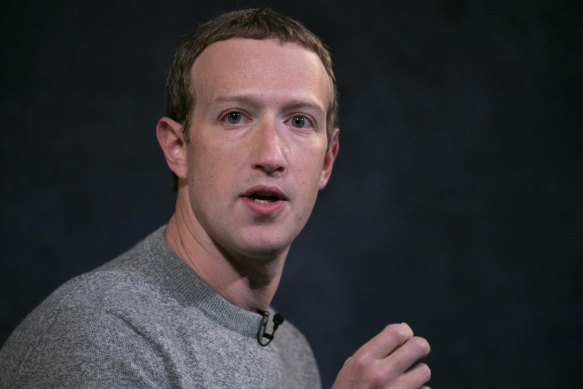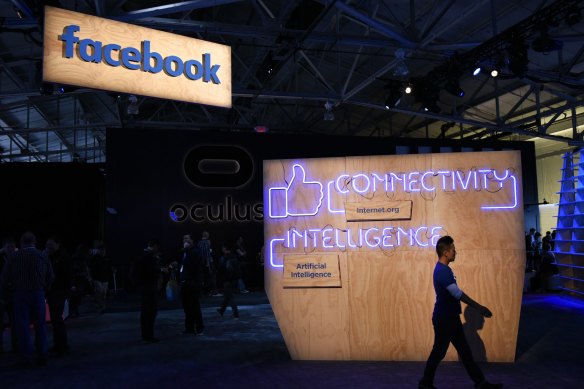Inside Zuckerberg’s battle to make Facebook users pay
By James Titcomb and Matthew Field
Mark Zuckerberg spent Facebook’s early days fending off claims he stole the idea from his Harvard classmates. More recently he has become far more comfortable taking inspiration from elsewhere.
Since buying Instagram, Zuckerberg has seen off competition from Snapchat by aping its video features with Stories and is now trying to do the same with Reels, a short-form video feature meant to give TikTok a run for its money.

Perhaps it was only a matter of time before Zuckerberg took a leaf out of Elon Musk’s book.
On Sunday night, Meta’s chief executive announced that Facebook and Instagram would introduce a subscription service, the first time users have been offered the chance to pay for special perks on the advertising-funding platforms.
For $US11.99 ($17.35) a month, or $US14.99 if purchased through an iPhone, users of Meta Verified will get a blue tick on Instagram and Facebook if they confirm their identity with an official ID. Their profiles will be more prominently displayed in comments and searches, and they will also be offered new protections against impersonators.
The service mirrors Twitter Blue, the $19-a-month verification service that Musk has been promoting since he bought the social network in October. Musk said it was “inevitable” that Zuckerberg would follow.
Yet Meta, the world’s biggest social media company with a value of $US450 billion, faces an uphill battle to encourage its more than 3.7 billion users to part with their cash. “I’m struggling to see how this will be a big hit for them at the price point and the perks package they are offering,” says Matt Navarra, a social media consultant who discovered Meta’s plans and forced the company to make the announcement on Sunday.
Musk’s effort to wean Twitter off advertising revenue is yet to bear fruit. Estimates suggest that fewer than 300,000 accounts have subscribed to Twitter Blue, less than 1pc of the social network’s total users.
Zuckerberg faces added challenges as a result of Meta’s size: the bar for success is high.
“It takes at least 5m paying subscribers to get to a place where it’s 1 per cent of revenue,” says Brian Wieser, an advertising consultant. “It’s hard to fathom this being a significant line item. Ninety nine per cent of revenue is advertising and they haven’t found a way to make a meaningful revenue stream from anything else yet.”
Meta’s most well-off users already bring in more in advertising revenue than they would if they paid for verification. Meanwhile, the majority of its users – many of them in developing countries – do not have the disposable income to sign up.
Zuckerberg has long toyed with the idea of charging users. In the days after the 2018 Cambridge Analytica scandal, which triggered an outcry about the company’s use of data, executives considered offering a paid-for and advertising-free version.
A year later, it removed the slogan, “It’s free and always will be,” from its sign-up page.
Until now, however, the idea of making users pay has never been a priority. Millions of people kept signing up to Facebook and Instagram each month, fuelling a seemingly perpetual cash machine of targeted adverts.

Critics repeatedly pointed out that Facebook was free because users were the product: their data was being sucked up and sold to advertisers. However, most people did not seem to mind and the sign-ups continued.
Today, however, Zuckerberg is facing a different reality.
Meta’s world-beating advertising machine is teetering, thanks to a combination of uncertain economic conditions and privacy changes from Apple that have limited how companies can target adverts on iPhones. Meta recorded its first ever drop in advertising revenue last summer and has now endured three consecutive quarters of declining revenue.
Investor confidence in Zuckerberg’s vision for the company has also slumped after a costly and as yet unsuccessful pivot to focus on the metaverse. He is under pressure to find some success.
Finally, the company is simply running out of new users to sign up. A total of 3.7 billion people are now using one or more of Facebook, Instagram and WhatsApp – almost all the world’s online population outside of Facebook-less China.
With no more worlds left to conquer, the alternative way to keep growing is to make more from each user. Estimates from Bloomberg Intelligence suggest Meta Verified could add between $US2 billion and $US3 billion to the company’s annual revenue of $US117 billion.
Paid-for verification is likely to appeal to two types of Meta users: professional influencers who rely on Facebook or Instagram for their livelihoods; and those for whom the fabled blue tick is a status symbol.
Platforms could see overall user numbers and usage wane if perks are taken away from those who do not pay. Musk is already doing just that, declaring last week that only those who subscribe to Twitter Blue would be allowed to further secure their account using phone number verification. The move provoked criticism from experts including Ciaran Martin, the ex-head of the National Cyber Security Centre.
Navarra believes the high price of Meta Verified is likely to turn users off. He is not prepared to pay despite working in social media. “I think it’s overpriced for what you’re getting at this time. It’s not the best value, in my mind, and the features aren’t things that people are clamouring for.”
He points out that unlike Twitter Blue, which restricts the number of adverts subscribers see, Meta Verified users will still be targeted with ads.
Success or not, the genie is out of the bottle. Alongside Meta and Twitter, Snapchat, Reddit and Discord have all introduced paid-for versions of their services. Snapchat, whose subscription offering is cheaper at $5.99, has been the most successful, bringing in 2 million subscribers with perks such as early access to experimental features and more control over posts.
The era of free social media is well and truly over – and Zuckerberg isn’t about to be left behind.
Telegraph, London
The Business Briefing newsletter delivers major stories, exclusive coverage and expert opinion. Sign up to get it every weekday morning.
Most Viewed in Business
Source: Thanks smh.com